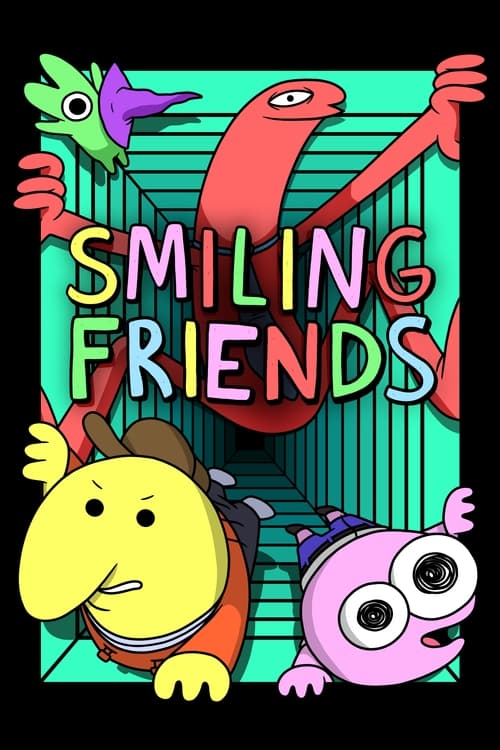
Ask Your Own Question
What is the plot?
The episode "Runaways" begins with a young girl named Anna, who is seen running away from a group of people in a park. She is visibly distressed and is trying to escape from a situation that seems threatening. As she runs, she collapses, and a passerby calls for help. The scene shifts to Princeton-Plainsboro Teaching Hospital, where Dr. Gregory House and his team are discussing a case involving a teenage girl who has been found unconscious.
House is intrigued by the case and decides to take it on, despite the fact that he is still dealing with the aftermath of his recent struggles with addiction and his complicated relationship with his team. He assigns Dr. Eric Foreman, Dr. Chris Taub, and Dr. Jessica Adams to investigate the girl's condition. They learn that Anna has a history of running away and has been in and out of foster care, which complicates her medical history.
As the team begins their investigation, they discover that Anna has a series of unexplained symptoms, including severe abdominal pain and a high fever. They run various tests, but the results are inconclusive. Meanwhile, House is preoccupied with his own issues, particularly his feelings of isolation and his struggle to connect with his team. He often uses sarcasm and cynicism as a defense mechanism, which creates tension between him and his colleagues.
The narrative shifts to Anna's backstory, revealing her troubled past and the reasons behind her running away. Flashbacks show her experiences in foster care, highlighting the emotional trauma she has endured. This context adds depth to her character and helps the audience understand her current state of mind.
As the team continues to investigate Anna's condition, they discover that she has been living on the streets and has been exposed to various environmental factors that could be affecting her health. They consider the possibility of infections or other illnesses related to her lifestyle. House, however, is skeptical of the team's conclusions and pushes them to think outside the box.
In a pivotal moment, the team learns that Anna has a brother, who is also a runaway. They track him down and bring him to the hospital, hoping he can provide more information about Anna's health and living conditions. The brother reveals that they have been living in a dangerous environment, which raises concerns about potential abuse or neglect.
As the episode progresses, Anna's condition worsens, and the team is forced to make difficult decisions about her treatment. They consider various options, including invasive procedures, but Anna is resistant to their interventions. House, recognizing her fear and distrust, tries to connect with her on a personal level, sharing his own experiences of feeling lost and alone.
In a dramatic turn of events, Anna's brother goes missing, prompting the team to search for him. They find him in a nearby alley, where he has collapsed from a drug overdose. This discovery adds urgency to the situation, as the team realizes that both siblings are in dire need of help. They rush him to the hospital, where he receives immediate medical attention.
As the episode reaches its climax, the team finally uncovers the root cause of Anna's symptoms: a rare autoimmune disorder that has been exacerbated by her living conditions. They quickly devise a treatment plan, but time is running out. Anna's health continues to decline, and the team must act swiftly to save her life.
In the final moments of the episode, House confronts Anna about her choices and the impact they have on her health. He emphasizes the importance of accepting help and facing her fears. Anna, moved by House's sincerity, begins to open up about her struggles and expresses a desire to change her circumstances.
The episode concludes with a sense of hope as Anna and her brother are placed in a safe environment, and House reflects on the connections he has made with his team and the patients they serve. The emotional weight of the episode lingers, highlighting the complexities of family, trust, and the challenges faced by those who feel lost.
What is the ending?
In the ending of "Runaways," the episode concludes with House confronting the consequences of his actions and the impact of his choices on the lives of the young patients he treated. The episode wraps up with House reflecting on his own struggles and the importance of connection, while the fates of the young runaways are left uncertain.
As the episode unfolds towards its conclusion, we see House and his team dealing with the aftermath of treating a group of teenage runaways who have been brought to the hospital. The primary focus is on a girl named Anna, who is suffering from a mysterious illness. House's unconventional methods lead to a breakthrough, but not without significant emotional turmoil.
In the final scenes, House is faced with the reality of the choices made by the runaways. Anna, who has been a central figure throughout the episode, is ultimately discharged from the hospital. However, her future remains precarious as she is torn between returning to her troubled home life or continuing to run away. House, who has been grappling with his own demons, sees a reflection of his struggles in Anna's situation.
As the episode closes, House is left alone in his office, contemplating the impact of his work and the lives of those he has tried to help. The emotional weight of the episode culminates in House's realization that despite his medical expertise, he cannot control the choices of others. The final moments emphasize the theme of connection and the challenges of navigating personal struggles, leaving viewers with a sense of unresolved tension regarding the fates of the young patients.
In a more detailed narrative:
The episode begins with a chaotic scene in the hospital as a group of teenagers, all runaways, are brought in after a series of health crises. Among them is Anna, a girl who quickly becomes the focal point of House's attention. As House and his team, including Dr. Taub, Dr. Chase, and Dr. Adams, work to diagnose Anna, they uncover layers of complexity in her life, including her troubled family background and the reasons for her running away.
House's approach is unorthodox, as he often disregards hospital protocol to get to the root of Anna's illness. He pushes his team to think outside the box, leading to a series of tense moments where they must confront their own biases and assumptions about the runaways. The emotional stakes rise as Anna's condition worsens, and House becomes increasingly invested in her case, seeing her as a reflection of his own struggles with addiction and isolation.
As the diagnosis becomes clearer, House's interactions with Anna reveal his vulnerability. He shares snippets of his own past, hinting at his own feelings of being an outsider. This connection deepens as Anna begins to trust House, seeing him as someone who understands her plight. However, the tension escalates when Anna's family arrives, complicating her decision to return home.
In the climax of the episode, House confronts Anna's parents, advocating for her autonomy and the need for her to make her own choices. This confrontation is charged with emotion, as House's own experiences with family and rejection surface. The scene is intense, showcasing House's fierce protectiveness over Anna and his desire to see her break free from the cycle of dysfunction.
Ultimately, Anna decides to leave the hospital, but her future remains uncertain. The episode closes with House reflecting on the choices made by the runaways, particularly Anna. He is left alone in his office, grappling with the realization that despite his best efforts, he cannot save everyone. The weight of his profession and the emotional toll it takes on him is palpable, as he contemplates the fragility of life and the importance of human connection.
The final moments of the episode linger on House's face, capturing a mix of resignation and hope. The fates of the other runaways are similarly ambiguous, leaving viewers to ponder the paths they will choose. The episode concludes with a poignant reminder of the complexities of youth, the struggles of finding one's way, and the impact of choices made in moments of desperation.
Is there a post-credit scene?
In the episode "Runaways" from Season 8 of House, there is no post-credit scene. The episode concludes without any additional scenes or content after the credits roll. The focus remains on the main storyline and character developments throughout the episode, particularly the challenges faced by the young patients and the dynamics within House's team.
What medical condition does the runaway teenager, a key patient in 'Runaways', suffer from?
The runaway teenager, named Kayla, suffers from a severe case of pneumonia, which is complicated by her underlying health issues.
How does House's approach to treating the runaway patients differ from his usual methods?
In 'Runaways', House employs a more empathetic and unconventional approach, focusing on understanding the emotional and psychological backgrounds of the runaway teenagers, rather than solely relying on medical diagnostics.
What motivates House to take an interest in the runaway teenagers' case?
House is motivated by a mix of curiosity and a desire to challenge himself; he sees the runaways as a puzzle that requires not just medical expertise but also an understanding of their troubled lives.
How does the character of Dr. Foreman react to House's handling of the case?
Dr. Foreman is initially skeptical and concerned about House's unorthodox methods, fearing that House's lack of focus on traditional medical practices could jeopardize the patients' health.
What role does the character of Dr. Taub play in the treatment of the runaway patients?
Dr. Taub plays a significant role in the treatment of the runaway patients by providing a more grounded perspective, often acting as a mediator between House's unconventional methods and the need for standard medical care.
Is this family friendly?
"Runaways," the tenth episode of Season 8 of "House," contains several elements that may be considered objectionable or upsetting for children or sensitive viewers.
-
Teenage Runaways: The episode revolves around the struggles of teenage runaways, which may include themes of abandonment, neglect, and the harsh realities of life on the streets.
-
Drug Use: There are references to drug use and addiction, which could be distressing for younger audiences or those sensitive to substance abuse issues.
-
Medical Procedures: The episode features graphic medical procedures and discussions about illness, which may be unsettling for some viewers.
-
Emotional Turmoil: Characters experience significant emotional distress, including feelings of betrayal, fear, and hopelessness, which could be intense for younger viewers.
-
Family Conflict: There are scenes depicting family dysfunction and conflict, which may resonate negatively with children or those from sensitive backgrounds.
These elements contribute to a mature narrative that may not be suitable for all audiences, particularly younger children.

















